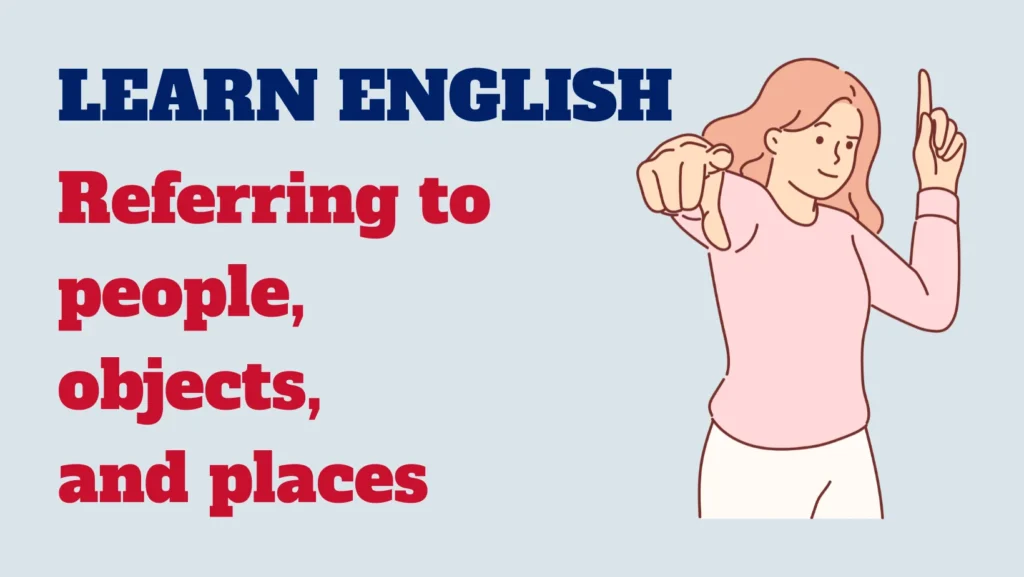The English language, diverse and nuanced, provides a variety of tools to accurately and clearly refer to people, objects, and places.

Whether you are just starting to learn English or looking to enhance your linguistic skills, this lesson will help you master different grammatical structures and essential expressions for effective reference.
Referring to people:
Personal pronouns:
Personal pronouns are crucial for smoothly referring to people.
Subject pronouns (I, you, he/she, we, you, they) identify who is performing the action in a sentence.
Example:
“I am going to the cinema.”
“They are reading a book.”
Object pronouns (me, you, him/her, us, you, them) replace previously mentioned nouns to avoid repetition.
Example:
“She gave him a letter.”
Names and titles:
Using names and titles is crucial for specific person reference. Common nouns refer to people generally, while proper nouns refer to specific individuals.
Examples:
“a man” (common noun)
“John” (proper noun)
Adding titles like
“Mr.” (for men)
“Mrs.” (for women)
or
“Doctor”
adds politeness and respect to the reference.
Demonstrative pronouns:
Demonstrative pronouns (this, that, these, those) help to point out or specifically indicate a person or a group of people in space.
Example:
“This woman is my friend. These are my colleagues.”
Referring to objects:
Definite and indefinite articles:
Definite articles (the) and indefinite articles (a, an) play a crucial role in referring to objects. Definite articles specify objects, such as “the car” or “the flowers,” while indefinite articles refer to objects in a non-specific manner, like “a book” or “some pens.“
Direct and indirect object pronouns:
To avoid repetition, direct object pronouns (it, them..) and indirect object pronouns (him/her, us, you, them..) replace object names mentioned earlier.
Examples:
“I love this book; I read it every day.”
“She gave flowers to her mother; she gave them to her yesterday.”
Descriptive adjectives:
Descriptive adjectives help specify objects by describing them.
Examples:
“a beautiful house”
“fresh fruits”
Referring to places:
Prepositions of place:
Prepositions of place (at, in, on, under, between, etc.) are essential for indicating the position or direction of a place in relation to another.
Example:
“I am going to the cinema.”
“The cat is under the table.”
Relative pronouns:
Relative pronouns (where, that, which) allow for referencing places by connecting them to other parts of the sentence.
Example:
“I visited Paris where I saw the Eiffel Tower.”
Locational expressions:
Locational expressions help specify places precisely, such as “next to,” “near,” “far from,” etc.
Example:
“I prefer the bakery next to the supermarket.”
By mastering grammatical structures and expressions to refer to people, objects, and places in English, you will be able to communicate more effectively and express yourself precisely. Remember to practice regularly and apply this knowledge in real-life situations to improve your language skills. Happy continued learning in English!



